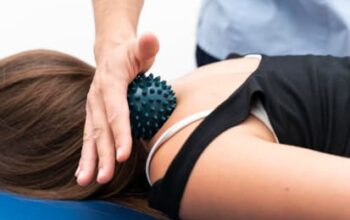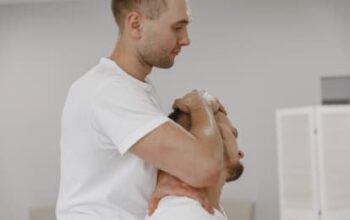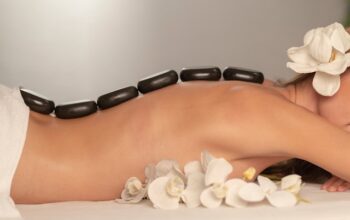In the golden years of my life, I have come to realize that the essence of vitality lies not in the vigor of youth but in the steady rhythm of motion that sustains us. Movement is the key to unlocking the doors of recovery, health, and ultimately, a life well-lived. Let me share with you the age-old wisdom that has guided me and countless others in reclaiming our vitality through the art of movement.
The Ancient Connection Between Movement and Healing
Long before modern medicine and technology, our ancestors relied on the simple yet profound act of movement to heal their bodies and minds. They walked, they danced, they stretched under the open sky, and in doing so, they maintained a harmonious balance with nature. This innate understanding of the body’s need for motion is something we must reconnect with today.
Why is Movement Crucial for Recovery?
Movement stimulates the body’s natural healing processes. Here are a few reasons why it is so effective:
- Improved Circulation: Movement enhances blood flow, delivering essential nutrients and oxygen to injured tissues, promoting faster healing.
- Lymphatic System Activation: Physical activity helps activate the lymphatic system, which is crucial for removing toxins and waste products from the body.
- Endorphin Release: Exercise triggers the release of endorphins, our body’s natural painkillers and mood elevators.
- Joint Flexibility: Regular movement maintains joint flexibility, reducing stiffness and pain.
- Muscle Strength: It helps in rebuilding muscle strength, crucial for support and mobility.
Finding the Right Kind of Motion
Not all movement is created equal, and it is essential to find the type that suits your body and recovery needs. Here are some gentle yet effective forms of movement that can aid in the healing process:
1. Walking: The Humble Hero
Never underestimate the power of a good walk. Walking is a low-impact exercise that can be done by almost anyone, anywhere. It helps improve cardiovascular health, strengthens muscles, and boosts mental well-being. Start with short, gentle walks and gradually increase the distance as your strength improves.
2. Tai Chi: The Dance of Life
Tai Chi, an ancient Chinese martial art, is often described as “meditation in motion.” Its slow, deliberate movements promote balance, flexibility, and relaxation. Tai Chi is particularly beneficial for older adults and those recovering from injuries, as it reduces stress and improves overall physical function.
3. Yoga: The Path to Inner Peace
Yoga is not just about physical poses; it is a holistic practice that combines movement with breath and mindfulness. It enhances flexibility, strength, and mental clarity. For those in recovery, gentle yoga practices such as Hatha or Restorative Yoga can be incredibly beneficial.
4. Swimming: Embrace the Water
Swimming is a fantastic low-impact exercise that provides a full-body workout. The buoyancy of water reduces stress on the joints, making it an ideal choice for individuals with arthritis or those recovering from surgery. Swimming improves cardiovascular health, muscle strength, and flexibility.
5. Stretching: The Unsung Hero
Simple stretching exercises can do wonders for your body. They help maintain flexibility, improve circulation, and reduce muscle tension. Incorporate a daily stretching routine to keep your body limber and ready for more intense activities.
Creating a Personalized Recovery Plan
Recovery through motion is not a one-size-fits-all solution. It is essential to create a personalized plan that considers your unique needs, limitations, and goals. Here’s how to start:
- Consult a Professional: Speak with a physical therapist, doctor, or a certified fitness trainer to design a movement plan tailored to your condition.
- Set Realistic Goals: Start with achievable goals and gradually increase the intensity and duration of your activities.
- Listen to Your Body: Pay attention to your body’s signals. Pain is a warning sign; do not push through it. Rest and adjust your activities as needed.
- Stay Consistent: Consistency is key to seeing progress. Incorporate movement into your daily routine, making it a non-negotiable part of your day.
The Mind-Body Connection
Healing is not just a physical process; it is deeply intertwined with our mental and emotional well-being. Movement plays a crucial role in nurturing this mind-body connection. Here are some ways to enhance this connection:
Mindful Movement Practices
Engage in activities that promote mindfulness, such as yoga, Tai Chi, or walking meditation. Focus on your breath, the sensations in your body, and the rhythm of your movements. This mindfulness can reduce stress, anxiety, and improve your overall sense of well-being.
Visualization Techniques
Visualize your body healing with every movement. Imagine your muscles growing stronger, your joints becoming more flexible, and your energy levels rising. Visualization can be a powerful tool in enhancing the effectiveness of your recovery plan.
Success Stories: Real-Life Inspirations
To inspire you on this journey, let me share a few stories of individuals who have reclaimed their vitality through the art of movement:
Mary’s Story: Overcoming Arthritis
Mary, a 70-year-old grandmother, struggled with severe arthritis for years. Her joints were stiff, and the pain was often unbearable. After consulting her doctor, she started a gentle yoga routine combined with daily walks. Within a few months, Mary noticed a significant reduction in pain and an increase in her mobility. Today, she leads a local walking group, inspiring others to embrace movement.
John’s Journey: Recovering from Surgery
John, a 55-year-old office worker, underwent knee replacement surgery. The recovery was slow, and he was frustrated with his limited mobility. His physical therapist introduced him to water aerobics and stretching exercises. John diligently followed his recovery plan and, within six months, was able to return to his favorite hobby, hiking. His story is a testament to the power of consistent, mindful movement.
Lisa’s Transformation: Battling Depression
Lisa, a 45-year-old teacher, battled depression and anxiety for years. Traditional therapies provided limited relief. She discovered Tai Chi and began practicing it daily. The gentle, flowing movements helped her find peace and balance. Today, Lisa credits Tai Chi for her improved mental health and renewed zest for life.
Embracing Community and Support
The journey to reclaiming your vitality through movement can be even more rewarding when shared with others. Finding a supportive community can provide motivation, encouragement, and a sense of belonging. Here are some ways to integrate community support into your recovery plan:
Join a Class or Group
Participating in a group exercise class, such as yoga, Tai Chi, or water aerobics, can offer social interaction and accountability. Classes led by experienced instructors ensure that you are performing movements correctly and safely.
Local Support Groups
Many communities have support groups for individuals recovering from specific conditions, such as surgery, chronic illness, or mental health challenges. These groups provide a space to share experiences, tips, and emotional support.
Online Communities
If local options are limited, online forums and social media groups can be excellent resources. Platforms like Facebook and Reddit have numerous groups dedicated to various forms of recovery and fitness. Engaging with these communities can provide inspiration and valuable insights.
Incorporating Movement into Daily Life
Making movement a natural part of your daily routine can significantly enhance your recovery and overall well-being. Here are some tips to seamlessly integrate motion into your life:
Active Commuting
If possible, walk or cycle to your destinations instead of driving. Even a short walk to the bus stop or a brisk walk during your lunch break can make a difference.
Household Activities
Chores such as gardening, cleaning, and cooking involve physical activity. Approach these tasks with mindfulness, focusing on your movements and posture to maximize their benefits.
Desk Exercises
For those who spend long hours at a desk, simple stretches and exercises can be done without leaving your chair. Set a timer to remind yourself to move every hour.
Family Activities
Engage your family in activities that promote movement, such as hiking, playing sports, or dancing. It’s a fun way to stay active and bond with loved ones.
Monitoring Progress and Celebrating Milestones
Tracking your progress and celebrating milestones can keep you motivated and focused on your recovery goals. Here are some ways to do this effectively:
Keep a Journal
Document your daily activities, how you feel physically and emotionally, and any improvements you notice. Reviewing your journal can provide insights into what works best for you and highlight your progress over time.
Use Technology
Fitness trackers and mobile apps can help you monitor your physical activity, set goals, and provide reminders. Many apps also offer community features where you can share your progress and find support.
Celebrate Achievements
Recognize and celebrate your milestones, no matter how small. Whether it’s completing a week of daily walks or being able to touch your toes again, these achievements are steps towards reclaiming your vitality.
The Role of Nutrition in Recovery
While movement is crucial, nutrition also plays a significant role in the recovery process. A balanced diet provides the necessary fuel for your body to heal and stay active. Here are some nutritional tips to complement your movement plan:
Hydration
Staying hydrated is essential for overall health and can improve your energy levels and muscle function. Aim to drink plenty of water throughout the day, especially before and after physical activity.
Balanced Diet
Focus on a diet rich in fruits, vegetables, lean proteins, whole grains, and healthy fats. These foods provide essential nutrients that support healing and energy production.
Supplements
Depending on your specific needs, supplements such as omega-3 fatty acids, vitamin D, and calcium may be beneficial. Consult with a healthcare provider before adding any supplements to your regimen.
The Emotional Aspect of Recovery
Recovery through motion is not just a physical journey; it also involves emotional healing. Movement can have a profound impact on your mental health, helping to alleviate stress, anxiety, and depression. Here are some ways to address the emotional aspects of recovery:
Mindfulness and Meditation
Incorporate mindfulness and meditation practices into your routine. These techniques can enhance your awareness, reduce stress, and improve your emotional well-being.
Expressive Movement
Engage in activities that allow you to express your emotions through movement, such as dance or creative arts. These forms of expression can be therapeutic and liberating.
Seek Professional Support
If you are struggling with emotional challenges, consider seeking support from a therapist or counselor. They can provide strategies and tools to help you navigate the emotional aspects of your recovery journey.
Final Words of Wisdom
As an old man who has witnessed the transformative power of movement, I urge you to embrace this journey with an open heart and a determined spirit. Recovery through motion is a timeless practice that can restore your vitality, enhance your well-being, and bring joy to your life.
Remember, the path to healing is not always linear. There will be ups and downs, moments of triumph and setbacks. But with patience, perseverance, and a commitment to nurturing your body and mind, you will find strength and resilience you never knew you had.
So, step forward with confidence, knowing that each movement you make is a step towards a healthier, happier you. Reclaim your vitality and let the art of movement guide you to a life filled with energy, purpose, and joy.



